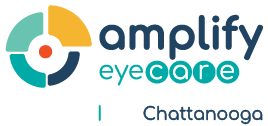Results.
After 12 weeks of treatment, the increases in amplitude of accommodation [office-based vergence/accommodative therapy with home reinforcement group (OBVAT) 9.9 D, home-based computer vergence/accommodative therapy group (HBCVAT+) 6.7 D, and home-based pencil push-up therapy group (HBPP) 5.8 D] were significantly greater than in the office-based placebo therapy (OBPT) group (2.2 D) (p-values ≤0.010). Significant increases in accommodative facility were found in all groups (OBVAT: 9 cpm, HBCVAT+: 7 cpm, HBPP: 5 cpm, OBPT: 5.5 cpm); only the improvement in the OBVAT group was significantly greater than that found in the OBPT group (p = 0.016). One year after completion of therapy, reoccurrence of decreased accommodative amplitude was present in only 12.5% and accommodative facility in only 11%.
Conclusions.
Vision therapy/orthoptics is effective in improving accommodative amplitude and accommodative facility in school-aged children with symptomatic CI and accommodative dysfunction.





